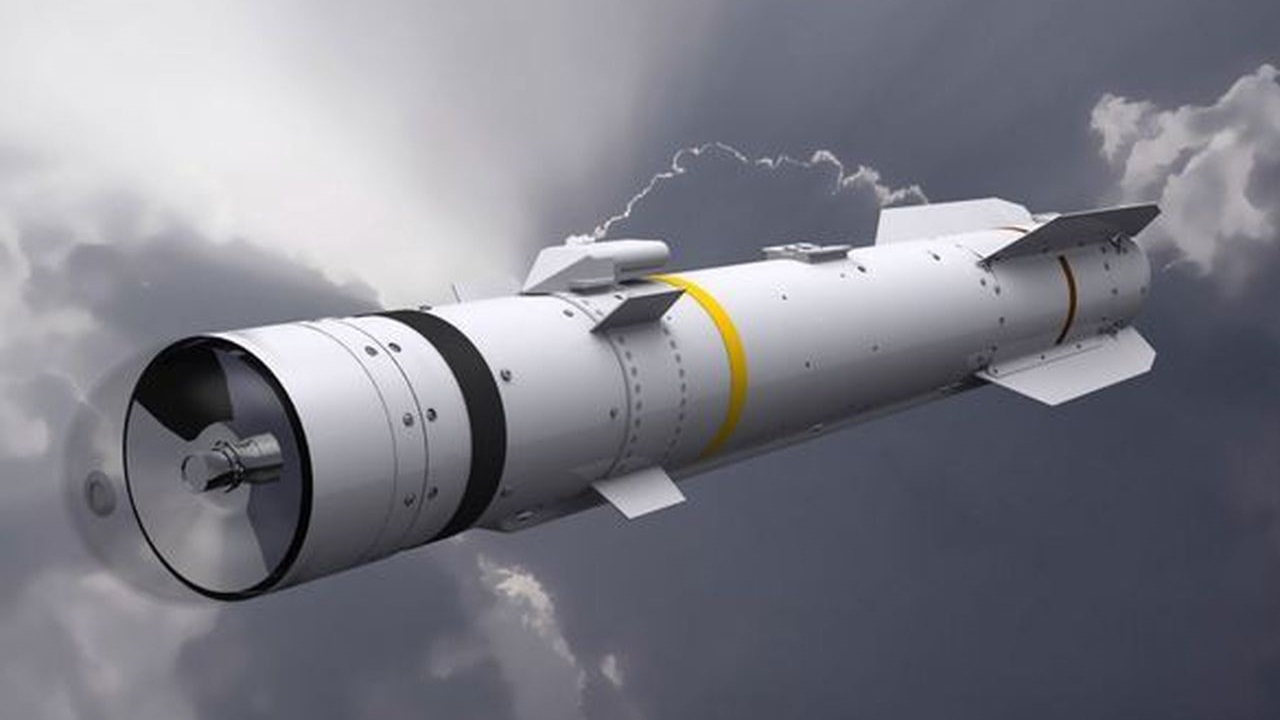Meet the Brimstone: It is hard to imagine more appropriate names for missiles than Hellfire and Brimstone.
The former, the American-made AGM-114 Hellfire missile, is perhaps best known for its use on the AH-64 Apache attack helicopter. The post-Saddam Iraq Air Force has also put these missiles to good use on their AC-208 Combat Caravans – a militarized version of the Cessna Caravan – during ISIS-killing missions.
The latter, meanwhile, is a British design that first saw combat usage during the Global War on Terror.
It is now making an impact in Ukraine’s defense against Russian aggression. Say hello to the Brimstone air-to-surface missile.
Brimstone: Early History and Specifications
Debuting in 2005 and manufactured by MBDA UK – the British division of the pan-European MBDA Missile Systems – the Brimstone missile family, as per the CSIS Missile Defense Project, “is comprised of fixed-wing-, rotary-, and surface launched missiles developed and deployed by the United Kingdom.
The baseline missile, the United Kingdom’s version of the AGM-114 Hellfire, has served as the basis for the Brimstone Dual Mode System, Brimstone 2, Brimstone Sea Spear, and the Future Attack Helicopter Weapon (FAHW).”
Specifications, depending on whether we’re talking the non-maritime or the Sea Spear variants, are as follows: length of 1.8 meters regardless of variant, diameter of 0.180 or 0.188 meters, a payload of 6.3 or 16 kilograms, and a range of 7 to 25 kilometers. Propulsion is of the two-stage turbojet engine type.
The Brimstone is a “fire-and-forget” missile, meaning it does not require further action or guidance from the shooter after launch. Arguably the best known example of a fire-and-forget missile is the AIM-120 Advanced Medium-Range Air-to-Air Missile, or AMRAAM.
Battle-Proven in the Global War On Terror
The Brimstone – specifically the Dual Mode Brimstone – was first blooded in June 2009 by RAF Panavia Tornado GR4s in Afghanistan under the auspices of Operation Herrick. “Since then,” the manufacturer proudly proclaims, “the missile has had numerous operational firings in Afghanistan, all of which have performed flawlessly delivering low collateral effects with extreme precision to the target location.”
From there, the Brits used the Brimstone as part of its Operation Ellamy anti-Gadhafi mission in 2011 and for anti-ISIS ops in Syria in 2015.
Meanwhile, the Saudis purchased an undisclosed number of Brimstone missiles from the UK between 2011 and 2013. Presumably, Riyadh uses these missiles as part of its anti-Houthi campaign in Yemen.
Use in Ukraine
As mentioned, Ukraine is the latest proving ground for the Brimstone missile. In April of last year, London confirmed that hundreds of Brimstone missiles would be sent to Ukraine, and the Ukrainian defenders certainly didn’t waste any time in putting the bounty to good use.
Barely a month after the missiles’ arrival, they were filmed destroying two Russian tanks of unspecified make. While the RAF deployed their Brimstones via airstrike, the Ukrainians have modified them for ground launch, specifically from modified trucks.
As if that weren’t already a big enough nightmare for Vladimir Putin’s beleaguered armored forces, recently, it was announced that the UK will supply a further 600 Brimstone missiles to Ukraine as part of a support package that also includes Challenger 2 main battle tanks.
Putin and his generals can’t be terribly happy about this latest development.
Christian D. Orr is a former Air Force officer, Federal law enforcement officer, and private military contractor (with assignments worked in Iraq, the United Arab Emirates, Kosovo, Japan, Germany, and the Pentagon).
From 19FortyFive

